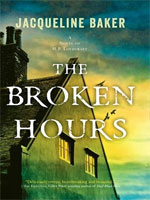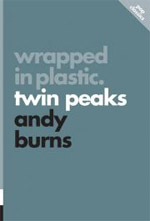Over the moon only starts to describe how thrilled I am to welcome Canadian writer, poet and playwright Leslie Greentree as a guest reviewer here. Her second collection of poetry, go-go dancing for Elvis, was shortlisted for the Griffin Poetry Prize. (Enjoy excerpts here and here.) I reviewed her short story collection A Minor Planet for You here. Oral Fixations, Greentree’s first play, co-written with Blaine Newton, was premiered in late 2014 by Ignition Theatre in Red Deer, Alberta. You want to follow her on social media, where her thoughts on things literary and theatrical are insightful and damned funny. You want to pay attention to her book recommendations and keep your ear to the ground for future literary announcements of her own …!

1936. A bleak and rainy night in Providence, Rhode Island. An impoverished Arthor Crandle makes his way to the home of his mysterious new employer, horror writer H.P. Lovecraft. Crandle is desperate for work, unfamiliar with Lovecraft’s fictions, and all too ready to overlook his employer’s idiosyncrasies. Crandle’s approach to the dark house is met with words of foreboding from a neighbour and, once within, no sign of his employer. And his initial ascent up the dim staircase becomes his first encounter with the dark presence that inhabits the landing.
The reader needs no familiarity with the work of H.P. Lovecraft to delight in the slow, delicious burn that is The Broken Hours. This work of gothic-style fiction is based in a solid knowledge of the work of H.P. Lovecraft and the final year of his life; from those points of fact, Jacqueline Baker builds her spooky world with a masterful hand, piling eerie moment on eerie moment, interspersed here and there with an uneasy, short-lived relief.
That first night, as Crandle makes his way past the landing, calling out to his unresponsive employer, he pauses for a moment, chilled at a sudden thought: “The unnatural, studied silence coming from the other side of the door was neither that of someone having just gone out nor of someone at focused work or even in deep sleep. Rather it was the stillness of someone’s strained listening, just on the other side. Watching, perhaps, through the crack there.”
The passive Crandle continues on to bed, clutching a letter that he discovers on the hall table. He adjusts to communicating with his reclusive employer through sporadic notes, and begins his work transcribing a haunting Lovecraft story. And then the beautiful Flossie arrives, bringing a certain light – and even more questions – into the house. Where is her roommate? In fact, where are all the women referenced by Lovecraft, and Crandle himself – an aunt, a mother, an estranged wife – a bevy of women just out of reach, apparently on their way back to this creaking, breathing house where the furniture shifts, where mysterious lights and figures appear and disappear? And what of the white-clad girl who drifts through the night garden?
The book is replete with images of damp, of bloat – a gleeful celebration of the moist and its shuddery effect on readers. Rain, damp clothing and heavy, humid skies are only the beginning. When Crandle first encounters the presence on the landing, he says that the air changed: “I do not know how else to describe it. It darkened, became more dense. The carpet grew unpleasantly thick beneath my shoes, a swollen thing.” Ugh. Lovely.
Crandle’s passivity, at first the recognizable response of a desperate man, begins to take on an eerie tone of its own: he arrives at Lovecraft’s home penniless. He’s also faint with hunger, but he sets aside the meagre and unappetizing fare Lovecraft provides. The house has no mirrors. As the narrator occasionally catches glimpses of himself in windows, he realizes he has lost weight, neglected to shave – indeed, become unrecognizable to himself.
And then there’s the letter Crandle’s employer has begged him to deliver to Lovecraft’s hospitalized mother. He can’t seem to do it; the days get away on him, only partly through Flossie’s welcome distractions. The unfulfilled mission builds anxiety in the reader’s mind even as it seems to escape Crandle’s. And the reader’s sense of unease with our narrator builds.
The creepy beauty of this novel lies in Baker’s steady, relentless build of atmosphere, a slow piling on of realizations and new questions. She sets us inside striking colour palettes: the gothic greys of dim rooms and heavy skies are offset by occasional moments of gilded light over distant buildings, flickering lights seen through night windows. And Crandle notes a lighter palette of cool purples and mauves in moments of reprieve: in the morning light, and as splashes of violet cushions and drapes that Flossie incorporates into her apartment. The same palette that offers temporary respite, however, is then mirrored in threatening skies that don’t quite rain, and – in perhaps the most disturbing scene of the entire book – in a monstrous, bruise-coloured tentacle Flossie and Crandle discover on the beach.
This is a book filled with moments where the reader feels – as Crandle does – that much of the action is happening just at the corner of your vision. Baker knows how to chill a reader more effectively than through ghouls shrieking out from the dark places. Things slither, our imagination grows: a jar of baby teeth scatters across the rug in a dimly lit room, a stone is lifted in a darkened yard, a hand passes over a nest of baby rats.
Early on, Crandle says, “I wonder, sometimes, what lives in us. I wonder what comes calling, what we invite inside.” It’s a sentiment the reader slowly catches up with – a slow and creeping recoil that leads inexorably to a twisty ending.
Crandle says, “If you want your secrets kept, they say, cloak them in candour.” On finishing The Broken Hours, you’re left with a satisfied crawling sensation, one that makes you want to wait a little while, to chew on what you saw and what you didn’t see, to move only slowly from the secrets of the moody mauve setting toward whatever candour you might find.
 This slim collection of essays is an infectious appreciation of arguably (well, you get no argument from me) one of the most influential and defining creations ever to come out of television, the David Lynch / Mark Frost collaboration Twin Peaks. Author and pop culture aficionado Andy Burns (editor-in-chief of pop compendium web site Biff Bam Pop!) has packed his reflections with myriad details that will captivate longtime fans of the surprisingly short-lived show, bolstered with unique interviews with Twin Peaks writers, cast members and other principals and expanded accessibly with cultural and historical references and antecedents. The book also recommends itself as a great starting point for those new to Twin Peaks, as it moves forward from the show’s 1990-91 run to current programs that were clearly influenced by, benefited from and have paid homages to the Lynch/Frost pioneering creativity.
This slim collection of essays is an infectious appreciation of arguably (well, you get no argument from me) one of the most influential and defining creations ever to come out of television, the David Lynch / Mark Frost collaboration Twin Peaks. Author and pop culture aficionado Andy Burns (editor-in-chief of pop compendium web site Biff Bam Pop!) has packed his reflections with myriad details that will captivate longtime fans of the surprisingly short-lived show, bolstered with unique interviews with Twin Peaks writers, cast members and other principals and expanded accessibly with cultural and historical references and antecedents. The book also recommends itself as a great starting point for those new to Twin Peaks, as it moves forward from the show’s 1990-91 run to current programs that were clearly influenced by, benefited from and have paid homages to the Lynch/Frost pioneering creativity.
